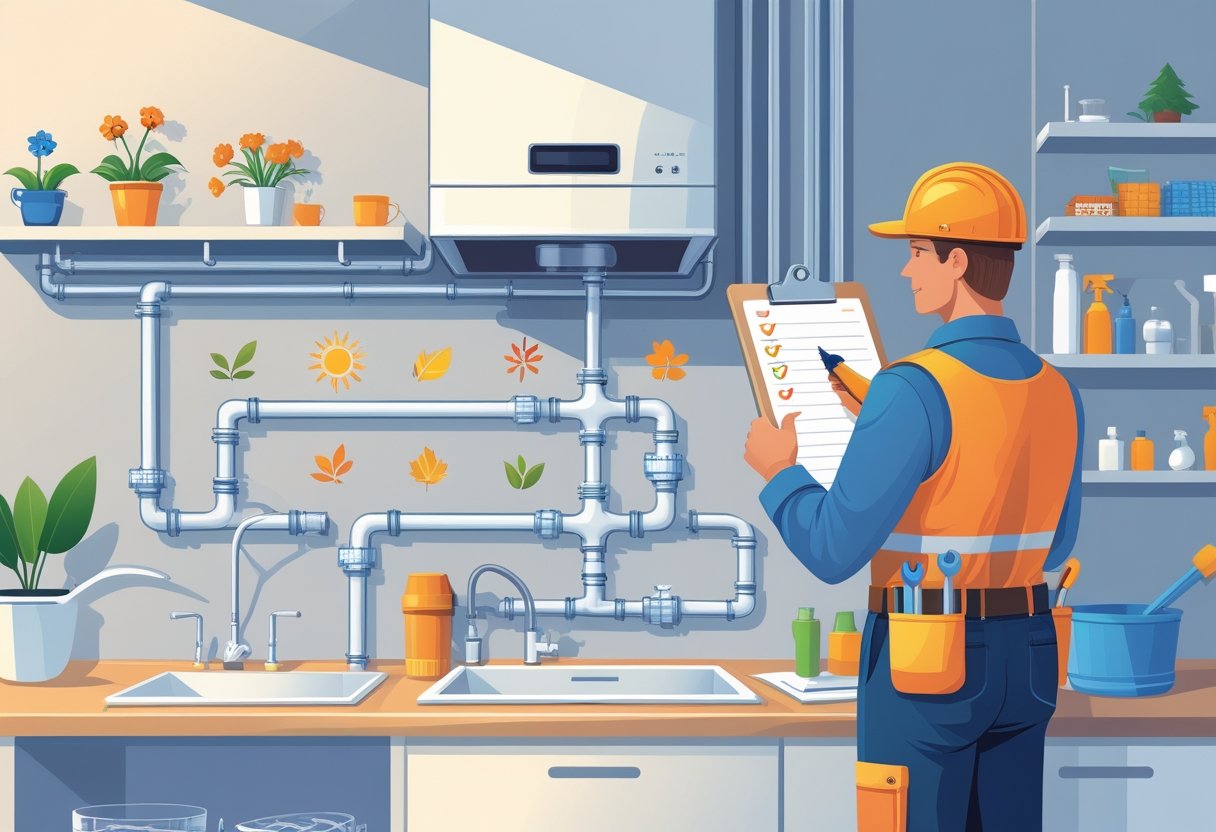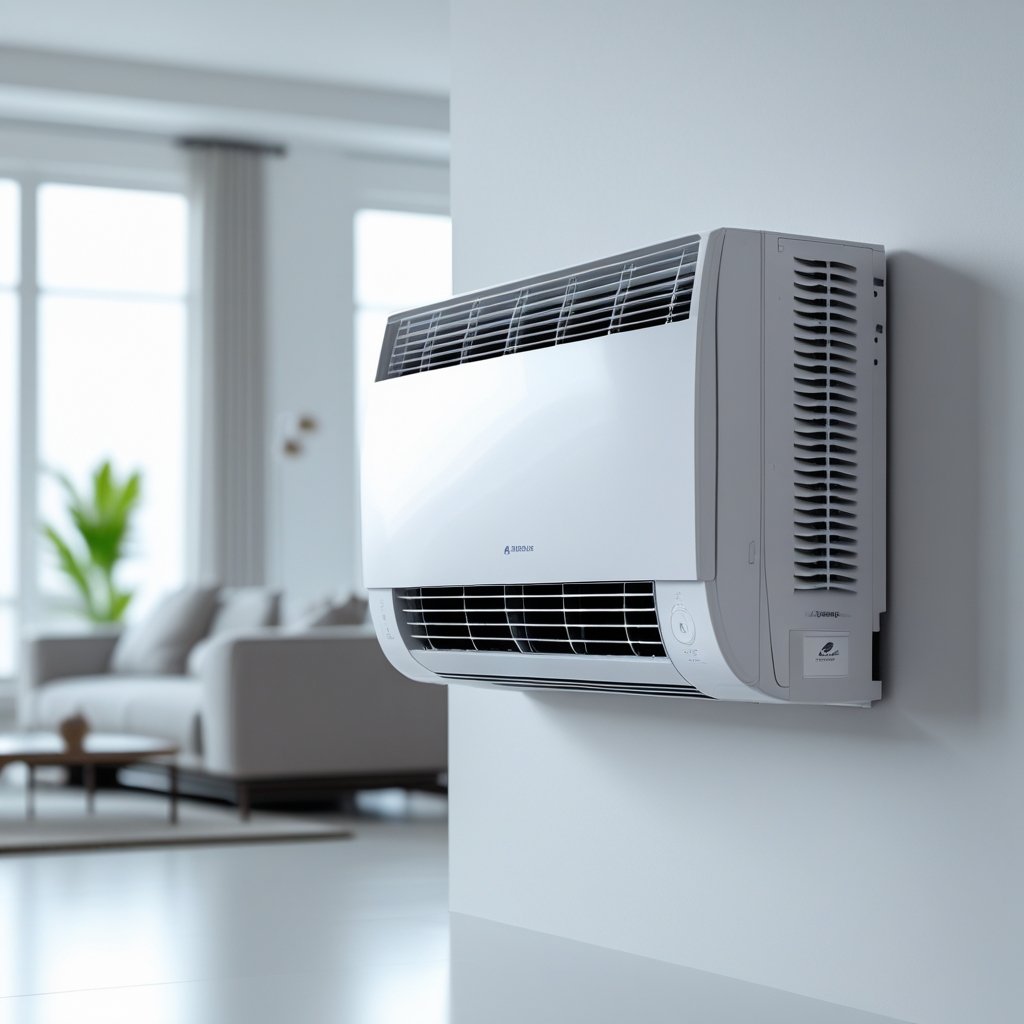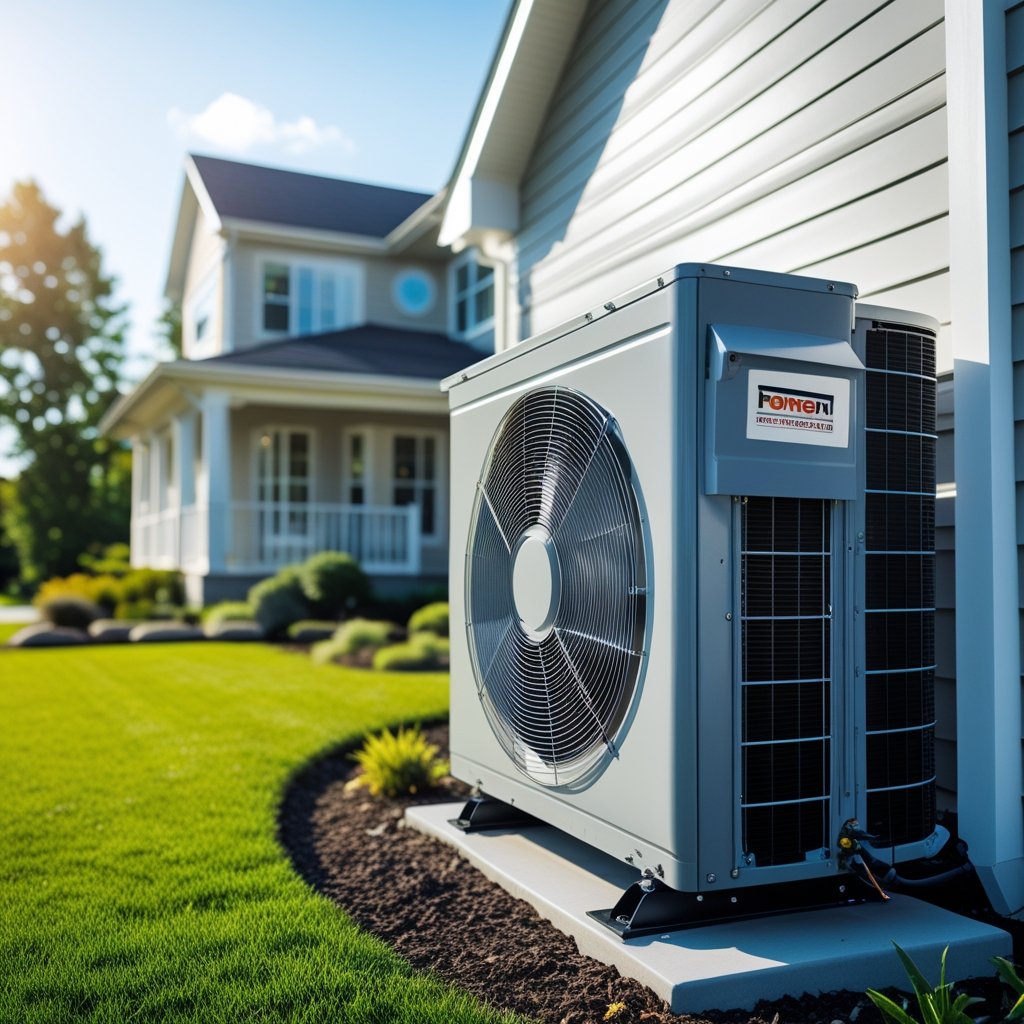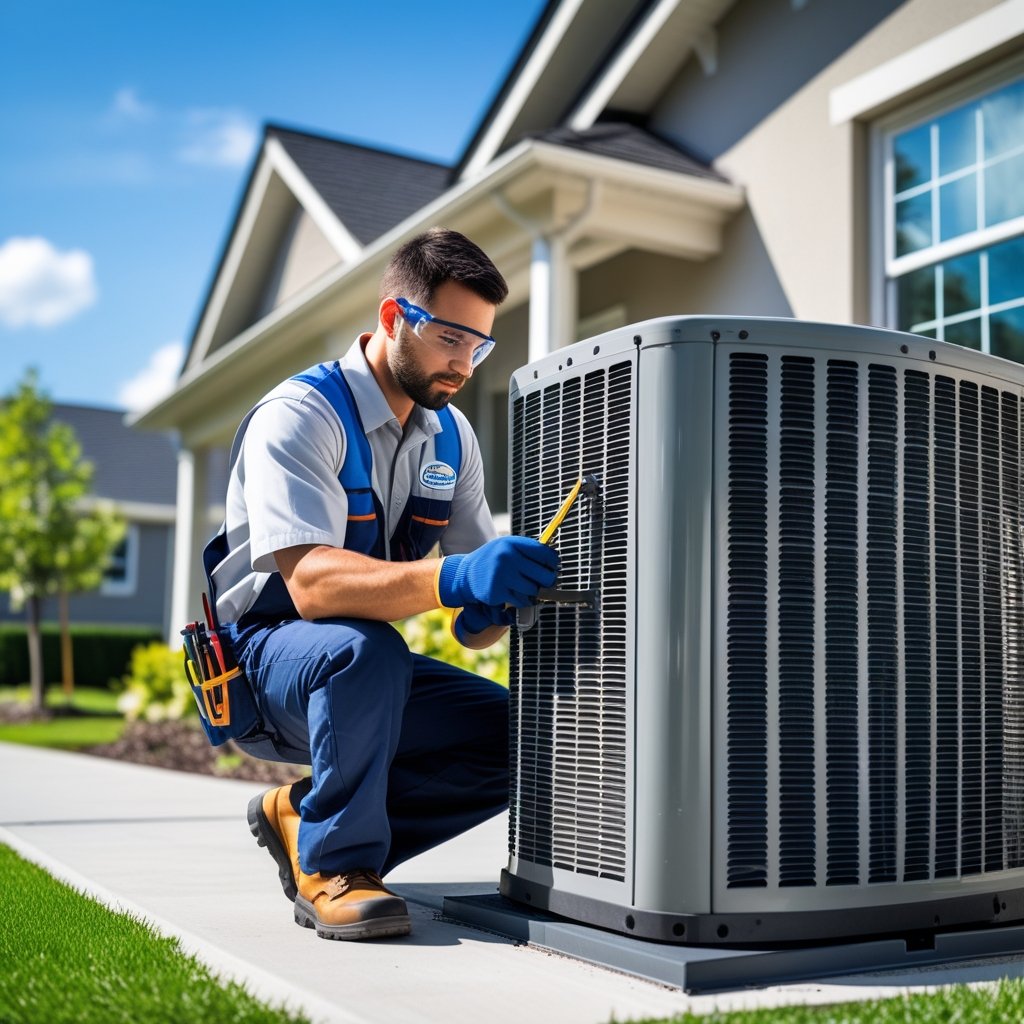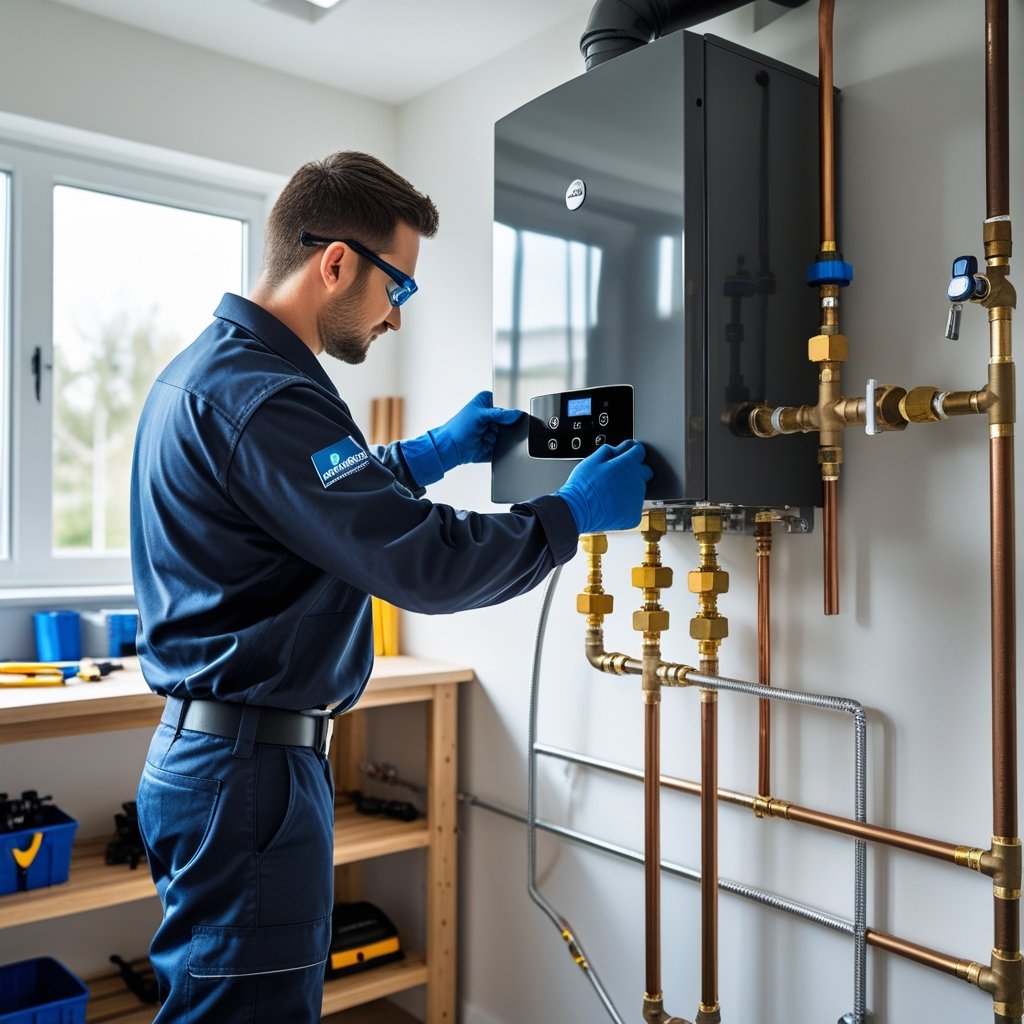Keeping your plumbing in good shape throughout the year helps you dodge costly repairs and those annoying surprises that always seem to hit at the worst times. A seasonal plumbing checklist lets you catch small issues early, protect your pipes, and make sure everything runs smoothly no matter the weather. Staying on top of regular maintenance isn’t just about saving money—it’s about avoiding headaches later.
You’ll want to check common trouble spots like leaks, water pressure, and drains. This simple routine keeps things working during winter freezes or summer heat. Leo Kob Co., serving South Central Pennsylvania since 1904, has seen it all and knows how to help homes stay comfortable with honest, quality service.
Whether you’re gearing up for cold weather or getting ready for warmer months, following a checklist gives you a little peace of mind. Small steps now keep water flowing and hassles at bay all year.
Why a Seasonal Plumbing Checklist Matters
Checking your plumbing regularly helps you stay ahead of problems. It saves money, keeps your home safe, and makes your pipes last longer. Knowing what to look for each season is key to avoiding surprises.
Preventing Costly Repairs
Small leaks or slow drains might seem minor, but they can turn into big issues if left alone. A seasonal checklist helps you spot these early signs before they cause water damage or mold.
For example, winter freezes can crack pipes, and summer heat can wear out pipe seals. Catching these problems early prevents expensive repairs.
By following a checklist, you avoid emergency plumber calls that often cost more. Regular upkeep, like checking for leaks or drain blockages, keeps your plumbing working smoothly.
Promoting Home Safety
Your plumbing directly affects your home's safety. Leaks can cause slippery floors or mold, triggering health problems. Gas leaks or broken water heaters can be dangerous if ignored.
A seasonal checklist forces you to test your water heater, inspect gas lines, and ensure drains aren’t clogged. This reduces fire, poisoning, or flood risks in your home.
By staying proactive, you protect your family’s health and avoid hazards. Leo Kob Co. encourages homeowners in South Central PA to make safety a priority with simple seasonal checks.
Extending Plumbing Lifespan
Plumbing parts wear down over time. Regular checks slow down this process and keep everything working longer. Flushing your water heater or inspecting seals stops corrosion and buildup.
Seasonal maintenance helps your pipes resist cracks and leaks caused by weather changes. For example, clearing clogs in fall prevents backup disasters in winter.
The more attention you give your plumbing, the fewer replacements you’ll need. Taking these small steps means you get the most out of your investment year after year.
Spring Plumbing Maintenance
Spring is a good time to check your plumbing after the cold months. Focus on spotting any damage, making sure outdoor faucets work well, and cleaning sump pumps. These tasks help protect your home from leaks, flooding, and costly repairs.
Inspecting for Winter Damage
Cold weather can crack or freeze pipes. Walk around your home and look for wet spots or cracks in pipes and fittings. Pay extra attention to basements and crawl spaces—pipes down there usually get less insulation.
Check under sinks and behind appliances too. Even a tiny leak can turn into a big problem if ignored. If you spot damage or leaks, it’s probably time to call a licensed plumber like Leo Kob Co. for a closer look and repairs.
Checking Outdoor Faucets and Hoses
Outdoor faucets and hoses take a beating from winter. In spring, check them for leaks, corrosion, and cracks. Turn on each faucet and watch for drips or weak flow.
Remove any garden hoses left on all winter. Leaving them attached can trap water and mess up the faucet. If you notice dripping or the faucet feels loose, you might need to swap out a washer or get a more thorough repair.
Cleaning Sump Pumps
Sump pumps help prevent basement flooding by moving water away. In spring, unplug your sump pump and scoop out any debris from the pit.
Pour water into the pit to check if the pump kicks on and drains it fast. If it doesn’t work or makes weird noises, schedule a check-up. Keeping your sump pump clean and tested means you’re ready for those spring downpours in South Central Pennsylvania.
Essential Summer Plumbing Tasks
Summer means more outdoor water use and extra stress on your plumbing. Checking sprinkler systems, testing water pressure, and clearing drains can help you avoid repairs and keep things humming along.
Inspecting Sprinkler Systems
Sprinklers work overtime in summer. Check each head for damage or clogs and clear away dirt or grass that’s blocking the spray.
Look for leaks in the pipes and connections. Even a tiny leak can waste a ton of water and drive up your bill.
Run the system one zone at a time and watch the spray. Water should hit the grass, not the driveway or sidewalk.
Set timers to water early or late—less sun means less evaporation.
If things seem off, don’t hesitate to call a pro. Leo Kob Co. can inspect and repair sprinkler systems to keep them efficient.
Testing Water Pressure
Water pressure that’s too high or too low can wreck your pipes and appliances. Grab a pressure gauge and test an outdoor faucet or near your main valve.
You want 40–60 psi. If you see numbers over 80 psi, that’s rough on your fixtures and can cause leaks.
A pressure regulator valve fixes high pressure. If pressure is low, you might have a clog, a broken pipe, or a supply issue.
Test pressure once a year, especially in summer. Catching problems early saves you from bigger headaches later.
Clearing Slow Drains
With more summer activity, drains can clog up fast. Slow sinks, tubs, or floor drains need attention before they turn into backups.
Start by pulling out any gunk you can see at the drain covers. Use a plunger on slow toilets or sinks.
In the kitchen, keep grease and food scraps out of the drain. Strainers help a lot.
If things are still slow, try a drain snake or a mix of baking soda and vinegar. Skip the harsh chemicals—they can eat away at your pipes.
For stubborn clogs, call in the experts. Leo Kob Co. handles drain cleaning safely so you don’t have to worry about it.
Autumn Plumbing Preparation
Getting your plumbing ready for autumn helps you dodge frozen pipes, leaks, and expensive repairs when it gets cold. Focus on pipe insulation, outdoor faucet care, gutter cleaning, and your water heater.
Insulating Exposed Pipes
Exposed pipes can freeze and burst when temperatures drop. Hunt down pipes in unheated spots—basements, crawl spaces, attics, or exterior walls.
Wrap them with foam insulation or heat tape. Make sure you cover bends and joints well. Seal up any cracks or gaps to keep cold air out.
Check around windows and doors too. Warm pipes mean fewer leaks and less water damage.
Draining Outdoor Faucets
Outdoor faucets can freeze and crack if water’s left inside. Turn off the water supply to those faucets from indoors.
Open the outdoor faucets to drain any leftover water. That little step keeps trapped water from freezing and splitting the pipes.
If you can, swap in frost-proof faucets. And don’t forget to disconnect and stash hoses indoors so they don’t get ruined.
Cleaning Gutters and Downspouts
Gutters and downspouts can clog up with leaves and debris in the fall. If they’re blocked, water can back up and seep into your foundation or walls.
Scoop out debris by hand or with a gutter tool. Run a hose through to make sure water flows freely. Check that downspouts send water away from your house.
Good gutter care keeps water away from your plumbing and foundation—definitely worth the effort.
Checking Water Heater Function
Your water heater works harder as it gets colder, so fall’s a smart time to check it over. Watch for leaks, rust, or odd noises.
Flush the tank to clear out sediment. That keeps it efficient and helps it last longer. Set the thermostat to about 120°F for comfort and savings.
If you spot issues or just aren’t sure, call a licensed plumber. Leo Kob Co. can do inspections and tune-ups so your water heater’s ready for winter.
Winter Plumbing Protection
Protecting your plumbing in winter means stopping pipes from freezing, watching for leaks, and keeping your water heater running strong. These steps help you avoid expensive repairs and make your home more comfortable.
Preventing Frozen Pipes
Frozen pipes can burst and create a real mess. Insulate pipes in unheated spots—think basements, attics, crawl spaces. Use foam sleeves or heat tape.
Let faucets drip slowly during super cold nights to keep water moving. Open cabinet doors under sinks to bring warm air to those pipes. If you’re heading out of town, shut off your main water supply and drain the pipes.
Monitoring for Leaks
Leaks can hide during winter and suddenly show up as big problems. Check around toilets, sinks, and water heaters often. Look for wet spots, puddles, or stains.
Install leak detectors in places where water damage is likely. They’ll alert you early so you can call a pro before things get worse. If you spot signs of a leak, don’t wait—call a plumber.
Maintaining Water Heater Efficiency
Your water heater works overtime in winter. Flush the tank at least once a year to get rid of sediment. That helps with efficiency and extends its life.
Set the temperature to 120°F—not too hot, not too cold. If your heater’s getting old, maybe it’s time to upgrade. Leo Kob Co. can inspect and service water heaters to keep them running smoothly through the cold months.
Checklist for Vacation Homes
If you’re leaving your vacation home empty for a while, a few simple steps can protect your plumbing and save you from a nasty surprise later. Focus on stopping water flow, draining pipes, and keeping the place warm enough in winter.
Turning Off Water Supply
Shut off the main water valve before you leave. This stops water from coming in and lowers your risk of leaks or floods.
After turning off the valve, open all the faucets and drains. This relieves pressure and lets leftover water out.
Don’t forget to turn off the water heater and any irrigation systems. It prevents damage and saves energy.
Draining Pipes
Once the main supply is off, open every faucet to clear out the pipes.
Flush toilets a few times to empty the tanks and bowls.
Use a sump pump or wet vac to get water out of low spots like basement drains.
If you’re really worried about freezing, pour a bit of non-toxic plumbing antifreeze into drains for extra protection.
Setting Thermostats for Cold Weather
Set your thermostat to at least 55°F so pipes don’t freeze. Even if no one’s home, that bit of heat matters.
Smart thermostats are handy—you can check and adjust temps from anywhere.
If your house has multiple zones, make sure every area with plumbing stays warm enough.
Leo Kob Co. can help you set up energy efficient systems to keep things safe and save money.
When to Call a Professional Plumber
Some plumbing problems really need a pro. Knowing when to call saves you time, money, and a lot of hassle. Finding the right plumber means the job gets done right.
Identifying Major Plumbing Issues
Call a plumber if you notice:
- Leaks that won’t stop, even after you try tightening or basic fixes
- Slow drains or clogs popping up in more than one spot
- Sewer smells or backups inside the house
- Water pressure that suddenly drops without warning
- Water heater trouble—no hot water or weird noises
These usually mean there’s a bigger issue with your pipes or sewer. DIY fixes often make things worse. Let a professional find the cause and handle it safely.
Choosing Qualified Technicians
Find plumbers who are licensed and insured—if something goes sideways, you’ll want that safety net. Ask if they’ve handled your kind of issue before; experience really does matter.
Here’s what’s worth checking before you hire:
FactorWhy It MattersLocal ReputationShows trust and quality workClear PricingAvoids surprise feesCustomer ReviewsConfirms good serviceService GuaranteesOffers peace of mind on repairs
Leo Kob Co. technicians have a reputation for honest pricing and solid skills. They work throughout South Central Pennsylvania and stick to a “no upsell” approach. Basically, they’ll do only what’s needed, and they’ll do it right.
Eco-Friendly Plumbing Tips for Every Season
Cutting down on water and energy waste isn’t as complicated as it sounds. A few easy habits can lower your bills and help out the planet.
First, fix leaks as soon as you spot them. Even a small drip can add up fast. Tighten up pipes and fixtures so you don’t lose water where you can’t see it.
When winter rolls in, insulate your pipes—especially the ones in chilly spots. No one wants a frozen, burst pipe. In summer, take a look at irrigation systems; leaks there can sneak up on you.
Try swapping in low-flow showerheads and faucet aerators. You won’t lose water pressure, but you’ll use less water and save on the energy to heat it.
Set your water heater to 120°F. It’s a sweet spot for safety and efficiency, and your heater will probably last longer, too.
If you’re not sure where to start, the folks at Leo Kob Co. in South Central PA know their stuff. They’ll spot problems and suggest fixes that help you save water, money, and headaches. No hard sell, just honest advice.
Taking care of your plumbing with a few eco-friendly habits can really add up. It’s not about overhauling everything—just making small changes that stick.
Frequently Asked Questions
Seasonal changes can mess with your plumbing, so it’s smart to stay ahead. Here are some answers to common questions that come up as the weather shifts.
What steps should be taken to winterize home plumbing systems?
Drain outdoor hoses and shut off exterior faucets. Insulate pipes in basements, crawl spaces, or anywhere that gets cold.
If you’re heading out of town, shut off your main water supply and drain the system. That way, you’re less likely to come home to a frozen mess.
Can you outline a plumbing maintenance routine for seasonal changes?
After each season, look for leaks, rust, or slow drains. Clear out gutters and downspouts so water doesn’t collect near your foundation.
Adjust your water heater’s temperature for the season—warmer in winter, maybe a bit lower in summer. Getting a pro inspection before winter isn’t a bad idea, either.
What precautions should homeowners take to avoid frozen pipes?
Keep your heat steady, even in rooms you don’t use much. Open up cabinet doors under sinks so warm air can reach the pipes.
On really cold nights, let a faucet drip—just a bit. It keeps water moving and helps prevent freezing. Insulation goes a long way, too.
How often should a professional plumber inspect your pipes and fixtures?
Once a year is usually enough to catch leaks or worn-out parts before they turn into big problems. If your house is older or you’ve had issues before, twice a year might be smarter.
Leo Kob Co. offers detailed inspections that can help your plumbing last longer, and their rates are fair.
What are the essential items to include in a spring plumbing checklist?
Check your sump pump and clear out any drains after the snow melts. Look for leaks around toilets, faucets, and outdoor spigots.
Flush your water heater to clear out gunk. Keep an eye on your yard for any strange puddles or wet spots—sometimes, that’s the only clue you’ll get.
What are common plumbing issues to look for during the fall season?
Keep an eye out for slow drains—fallen leaves and bits of debris tend to sneak in and clog things up this time of year. It’s a good idea to check outdoor faucets before the cold really sets in, too.
Sometimes pipes tucked away behind walls or under floors spring leaks or get damaged. If you spot anything weird, even if it seems minor, it’s worth dealing with now instead of waiting for a bigger headache in the winter.

